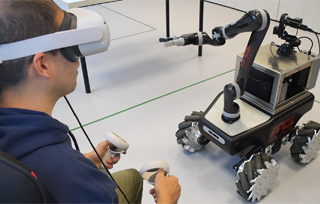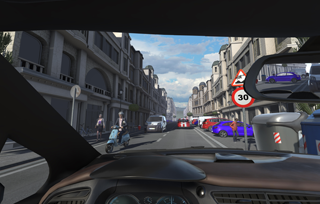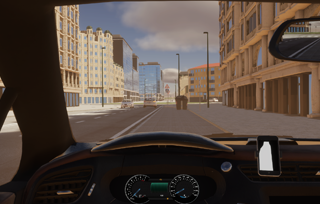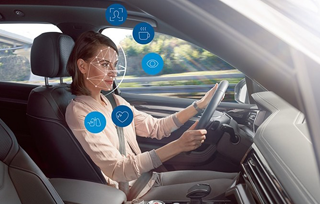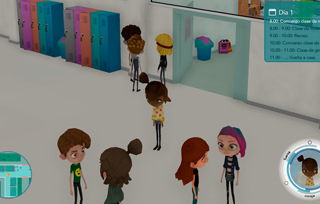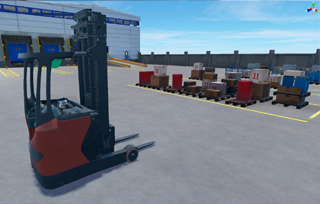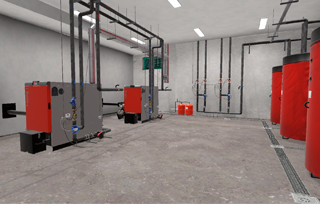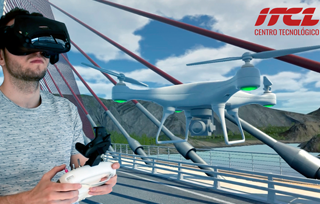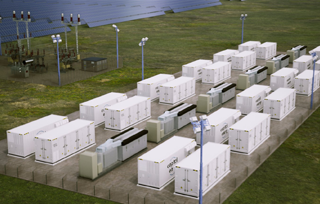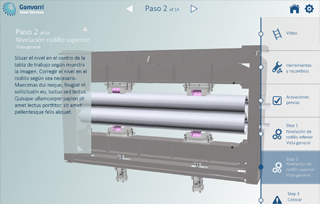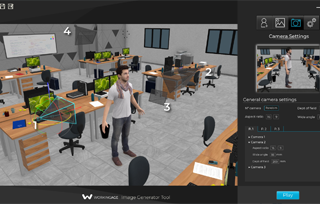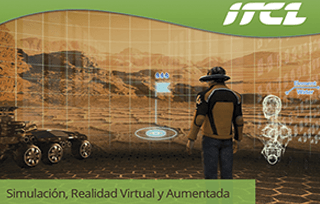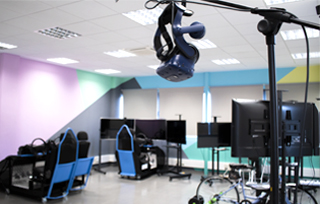Simulation and Virtual Reality
SIMULATION AND VIRTUAL REALITY
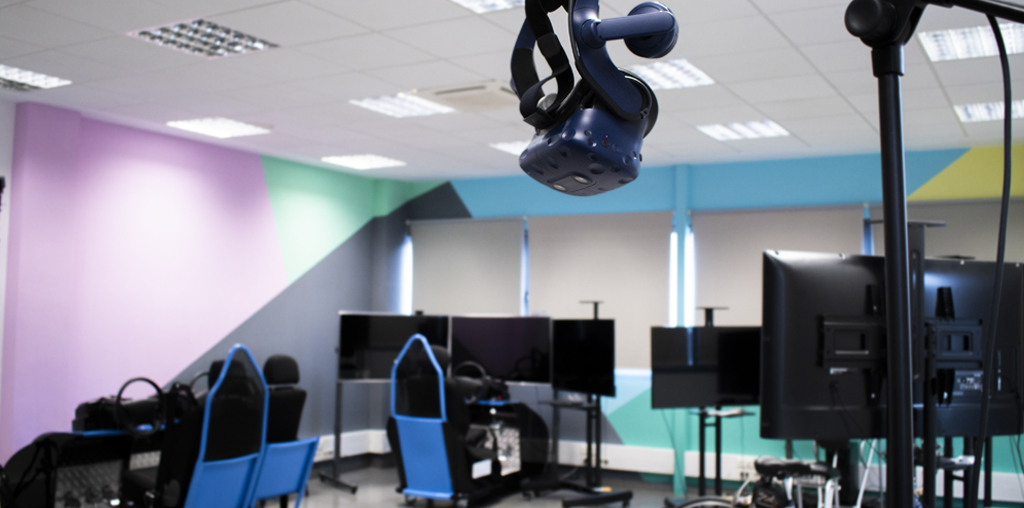
The Simulation and Virtual Reality research area develops R&D&I projects that enable virtual experiences of real situations to be carried out, such as risk environments, machinery operation or vehicle driving.
In addition, it also carries out Virtual/Augmented/Mixed Reality projects for industry 4.0, and projects in fields such as training, heritage, building, among others.
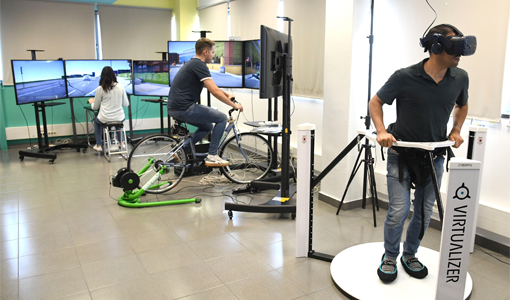
Driving simulators
The aim of the simulators is to provide a more complete training – training, behavioural analysis and risk avoidance.
The great advantage of these driving simulators for special vehicles is that they allow training in all special or risky situations that may occur in real life without any danger to people or equipment.
The simulators are intended to reproduce the sensations that would occur if we were actually in the simulated environment. These sensations are visual, auditory, physical, etc. and allow research into behaviour and conduct that would otherwise not be possible in a safe way.
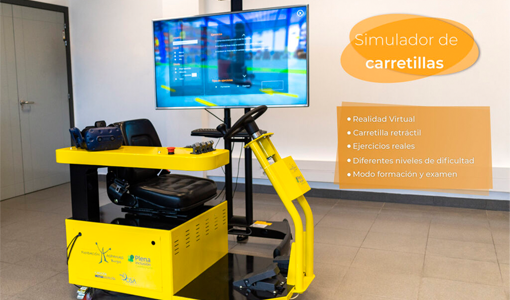
Virtual Reality training simulators
Virtual Reality places us in an immersive environment that allows us to interact with the environment in a safe way.
This technology is very useful in training as it provides a safe environment without the need for large infrastructures.
The biggest advantage of using Virtual Reality for training is that it only requires Virtual Reality equipment and a computer.
The simulators for training are characterised by realistic 3D graphics so that the user finds similarities between the Virtual Reality and the real machinery, thus facilitating adaptation to the use of the real machine.
By recording the user’s movements, the examiner or trainer has greater control of the student’s attention and behaviour, response times, types of response to normal or risky situations.
This type of application allows us to train workers in what will be their workplace, even before the lines are available from the design drawings and modes of operation.
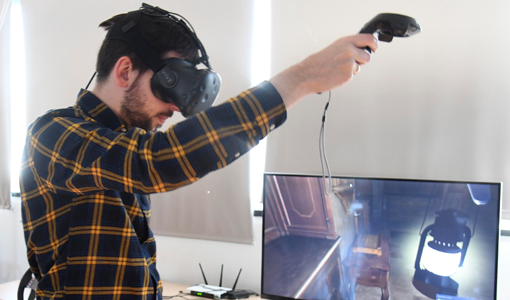
Virtual Reality Experiences
We can recreate any experience in an immersive and interactive way in virtual reality for marketing, heritage, architecture, games…
Virtual Reality allows an immersive experience close to what a real situation would be like. The user can easily get an idea of what a real environment is like without the need to be there or visit places that no longer exist.
Any type of scene can be recreated, either through rendered scenarios or 360º photography/video. Moreover, they can be interactive environments for the user.
It can replace real environments, with the advantage that changes can be included at a lower cost and with a quick execution. Moreover, it can be enjoyed from anywhere.
By recording the user’s movements, it is possible to analyse attention, emotions and behaviour in different situations, which is very useful information for neuromarketing.
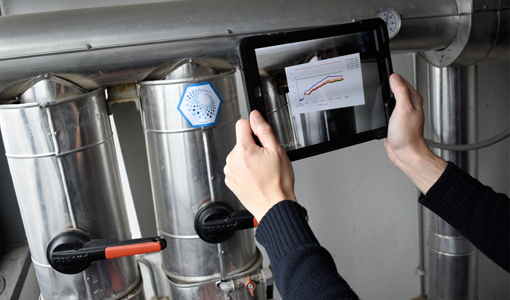
Advanced Augmented/Mixed Reality applications
Augmented/Mixed Reality allows mixing a real environment with a virtual one through a device.
Augmented/Mixed Reality allows us to add layers of visual information about the real world around us, using technology, devices such as our own mobile phones. This helps us to generate experiences that provide relevant knowledge about our environment, and we also receive this information in real time.
Through Augmented/Mixed reality, the virtual world is intermingled with the real world, in a contextualised way, and always with the aim of better understanding everything that surrounds us.
A doctor can be watching his patient’s vital signs while operating; a tourist can raise his camera and find points of interest in the city he is visiting, pointing towards the places he wants to visit; or an operator can carry out maintenance work in an engine room, obtaining information on where each component is located, simply by pointing with his tablet, and without the need to consult a text manual.
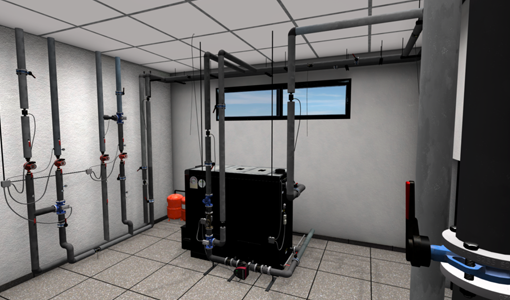
3D modelling and animations
3D technology allows us to recreate the real world with a high level of detail and realism.
By using 3D simulation environments, all aspects of production can be validated prior to construction. For example, the layout of a new facility, verify the visibility conditions or view a complete manufacturing plant by observing the production lines in operation, visualise or visually validate all your prototypes or products, analyse the processes, the ergonomics of a workstation, etc.
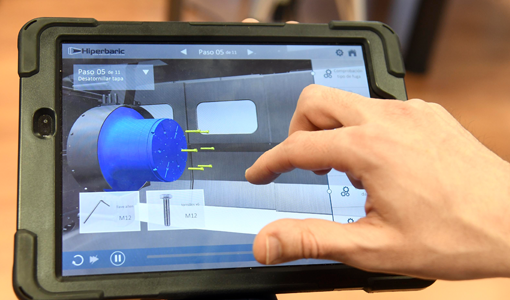
Interactive manuals
These manuals allow us to obtain visual information on the operation of any machine through 3D models, interactive animations of the operation or explanatory videos.
Informative manuals are very useful for training and maintenance as they allow the operator to have a multimedia support of the operation of the machine he is working with.
Within an interactive manual we can find information about the plant and its equipment, the processes and fundamentals of each machine, or the simulation of scenarios in abnormal conditions that occur frequently, as well as how to solve them.
The manual can be included in a digital platform from which the contents can be updated and personalised for each user.
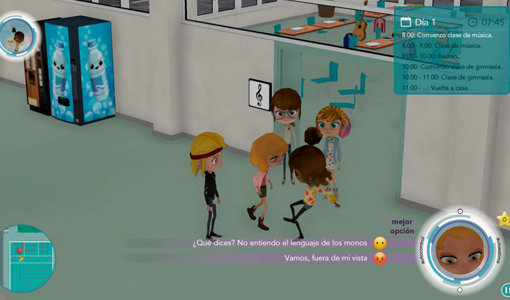
Serious Games
Serious Games are games designed with an educational purpose, so that the user learns to perform certain tasks through gamification.
The term “serious” refers to those video games that are mainly used in education, science, health care, urban planning, engineering, etc.
Serious games are designed to teach. They are video games and applications with a didactic background.
They are a powerful tool for companies that use gamification elements to generate a positive and didactic experience about something that, a priori, is not.
The main purpose is to achieve the company’s objective in an enjoyable way, such as a welcome manual, learning a certain protocol, or simply transmitting the brand’s values and reinforcing branding.
OUR TEAM
The area is made up of technical experts who are constantly looking for innovation in Simulation and Extended Reality systems. It is a multidisciplinary and creative team made up of engineers and artists.
Our programmers provide the objects with behaviour and create the different interactions: object movements, database programming, network communications, simulator interconnection, intelligent behaviour, dll integration, object recognition, hardware integration…
The art department is in charge of visually capturing a concept or an idea. They create all the graphic content such as 3D models, textures, animations, user interface, adapting to the ideal aesthetic line and the requirements of the chosen support for each project.
Our team is made up of more than 10 researchers, and is one of the most important research groups at the ITCL.
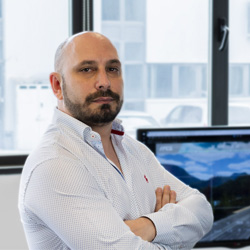
Javier Melús Carruez
Head of Simulation, VR and AR Area
Computer Engineer. Expert programmer in Unity 3D. Senior developer of applications for Android and iOS with Eclipse, Android Studio, xCode or Unity 3D. Experience in programming and videogame development. Since 2012 he has developed applications and games for mobile, Android and iOS and has extensive experience teaching courses in video game programming and virtual reality environments, for mobile application development with Android.
Experience as CEO, entrepreneur (creating his own video game development company) and has been head of programming and projects in various national companies for the development of video games. Extensive experience teaching courses.
As head of the Simulation, Virtual Reality and Augmented Reality Area at ITCL, he coordinates a multidisciplinary team (computer engineers and telecommunications engineers), Unity developers, programming in C#, Unreal C++, SQL, Python, and Java, to carry out R&D projects at national and European level.
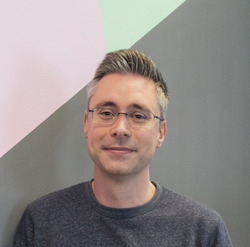
Sergio Peña Varga
Head of the Art Department
2D/3D artist with more than 19 years of professional experience in various sectors related to art and design. He started as a traditional 2D animator, mainly for advertising production companies, a stage that allowed him to acquire skills that he would later apply as a 3D artist in a wide range of simulation, VR and AR projects.
He has extensive experience in the pipeline of 3D productions, from concept stage to final product, working closely with the client and the team to achieve a product that meets expectations while providing a unique and innovative vision. As a 3D Artist, he specialises in various areas of production, such as modelling and texturing for real-time graphics, lighting, digital sculpting and 3D animation and as a UX/UI Designer, he focuses on designing the visual look and feel and defining the user experience.
As head of the art department, he leads the artistic direction of the entire creative process of the projects from the conceptual stage to the final design and coordinates a multidisciplinary team of creatives and artists, which visually embodies the required concept.
RESEARCH PROJECTS
The most challenging projects are those that involve the combination of several technologies developed in ITCL such as VR, AR and Simulation, artificial intelligence for scenario prediction, artificial vision for fault identification or object detection and integration with different IoT electronic devices that help the real-time monitoring of processes, objects, animals or people.

